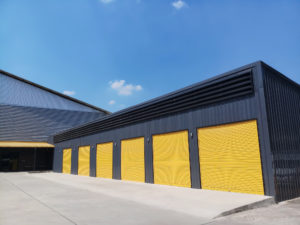
Breaking Down the True Cost of Steel Buildings
Steel buildings have gained popularity in various industries due to their durability, versatility, and cost-effectiveness. When considering the purchase of a steel building, it is essential to understand the true cost beyond the initial price tag. In this blog, we will break down the true cost of steel buildings, taking into account various factors that can impact the overall expenses involved.
COMPARE QUOTESDesign and Engineering:
The design and engineering phase is an essential aspect of constructing a steel building. The complexity of the design, customization requirements, and engineering calculations can influence the overall cost. Factors such as building size, shape, and structural requirements will determine the level of design and engineering expertise needed, impacting the cost of these services.
Materials:
Steel buildings are made from high-quality steel, which can vary in price depending on the market conditions and the specifications of the project. The cost of materials includes the steel framing, roofing, siding, insulation, doors, windows, and other components. It is crucial to consider the quality of materials to ensure durability and longevity, which may affect the upfront cost.
Site Preparation:
Before the construction of a steel building, site preparation is necessary. This includes clearing the land, grading, leveling, and preparing the foundation. The condition of the site, its accessibility, and any necessary site improvements can impact the cost of site preparation.
Permits and Approvals:
Obtaining the necessary permits and approvals from local authorities is a crucial step in the construction process. The cost of permits can vary depending on the location and the specific requirements of the project. It is important to factor in these costs when budgeting for a steel building.
Construction Labor:
The labor costs involved in erecting a steel building can vary based on the size, complexity, and timeline of the project. Skilled laborers, such as welders and construction workers, are required to assemble the steel components and complete the construction process. The cost of labor should be considered when estimating the overall cost of the project.
Foundations and Anchoring:
The type of foundation and anchoring system required for a steel building will depend on the site conditions and local building codes. The cost of foundations, such as concrete slabs or piers, and the anchoring system to secure the building will impact the total cost.
Utilities and Services:
Consideration should be given to utilities and services required for the steel building. This includes electrical wiring, plumbing, HVAC systems, and any other services needed for the building’s functionality. The cost of these installations should be factored into the overall budget.
Insurance and Maintenance:
Steel buildings are durable and require minimal maintenance compared to other construction materials. However, it is essential to consider insurance costs and ongoing maintenance requirements to ensure the longevity and protection of the structure. These costs should be included in the long-term budget planning.
Financing and Interest Rates:
If financing is required for the construction of a steel building, it is important to consider the interest rates and financing options available. The cost of financing can impact the overall project cost, including the repayment terms and interest expenses.
Long-Term Cost Savings:
While the upfront cost of a steel building may be higher compared to other construction methods, it is important to consider the long-term cost savings. Steel buildings are energy-efficient, requiring less maintenance, and often have lower insurance costs due to their resistance to fire, pests, and extreme weather conditions. Additionally, their durability and longevity result in reduced repair and replacement costs over time.
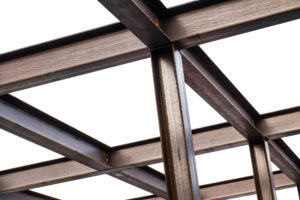
The true cost of steel buildings encompasses various factors beyond the initial price tag. Considering design and engineering, materials, site preparation, permits, labor, foundations, utilities, insurance, maintenance, and financing, helps provide a comprehensive understanding of the overall expenses involved. It is important to carefully evaluate these factors and consider the long-term benefits and cost savings associated with steel buildings.
COMPARE QUOTESWhen comparing the true cost of steel buildings to other construction options, it becomes evident that steel buildings offer several advantages:
- Durability: Steel is known for its strength and durability, making steel buildings resistant to harsh weather conditions, fire, pests, and deterioration. This longevity reduces the need for frequent repairs and replacements, resulting in long-term cost savings.
- Energy Efficiency: Steel buildings can be designed with energy-efficient features such as insulation, reflective roofing materials, and proper ventilation. This helps reduce energy consumption and lowers utility costs over time.
- Versatility and Customization: Steel buildings offer flexibility in design and can be customized to meet specific requirements. They can accommodate various architectural styles, layouts, and sizes, allowing for efficient space utilization based on the needs of the business or industry.
- Construction Speed: Steel buildings are often prefabricated, which means that the components are manufactured off-site and then assembled on-site. This construction method reduces the overall construction time, resulting in cost savings and quicker occupancy.
- Sustainable and Environmentally Friendly: Steel is a recyclable material, making it a sustainable choice for construction. The use of steel reduces the demand for raw materials and minimizes waste. Additionally, steel buildings can be designed to incorporate eco-friendly features such as solar panels or rainwater harvesting systems, further reducing environmental impact.
To make the most informed decision regarding the cost of a steel building, it is advisable to consult with reputable steel building suppliers or contractors. They can provide detailed cost estimates, help identify potential cost-saving opportunities, and offer guidance on customization options to meet specific needs.
The true cost of steel buildings involves considering various factors, including design and engineering, materials, site preparation, permits, labor, foundations, utilities, insurance, maintenance, and financing. While the initial investment may be higher compared to other construction methods, the long-term cost savings, durability, energy efficiency, and customization options make steel buildings a worthwhile investment for many businesses. Conducting thorough research and working with experienced professionals can ensure a successful and cost-effective steel-building project.
Steel Building Kits: Are They Right for You?
Steel building kits have gained popularity as a cost-effective and convenient option for constructing various types of buildings. These kits provide all the necessary components and materials to assemble a steel building, making it a DIY-friendly solution for those who prefer a hands-on approach or want to save on labor costs. Here’s what you need to know about steel building kits:
What is a Steel Building Kit?
A steel building kit is a package that includes all the pre-engineered components required to construct a steel building. These kits typically consist of steel framing components, roof and wall panels, fasteners, trim, and other necessary accessories. The components are precision-engineered and designed to fit together seamlessly, simplifying the construction process.
Benefits of Steel Building Kits:
- Cost Savings: Steel building kits are generally more affordable compared to traditional construction methods. The price of steel, being a cost-efficient material, contributes to the overall affordability of the kits.
- Ease of Construction: Steel building kits come with detailed assembly instructions, allowing individuals with basic construction skills to successfully complete the project. The pre-cut and pre-drilled components ensure a precise fit, reducing the need for specialized tools or extensive construction knowledge.
- Customization Options: Steel building kits offer a range of customization options to meet specific needs. Whether you require additional doors, windows, insulation, or specific dimensions, kits can be tailored to your requirements.
- Versatility: Steel building kits can be used for various applications, including agricultural buildings, storage facilities, workshops, garages, commercial spaces, and more. Their versatility makes them suitable for both personal and commercial use.
- Durability: Steel is a highly durable material, known for its strength and resistance to harsh environmental conditions. Steel building kits provide a sturdy and long-lasting structure that requires minimal maintenance.

Considerations for Steel Building Kits:
- Size and Complexity: Steel building kits are available in various sizes, from small sheds to large commercial structures. Consider your intended use and the size requirements to ensure the kit suits your needs.
- Foundation: Adequate site preparation and a suitable foundation are essential for the successful installation of a steel building kit. It is crucial to consult with a professional to determine the appropriate foundation type for your specific location and building requirements.
- Permits and Regulations: Before purchasing a steel building kit, it is important to research and understand local building codes, permits, and regulations. Ensure compliance with all requirements to avoid any legal issues.
- Additional Services: While steel building kits provide the primary components for construction, additional services such as site preparation, concrete pouring, electrical work, and plumbing may be required. Consider these additional services and associated costs when planning your project.
Steel building kits offer an affordable, customizable, and durable solution for constructing a wide range of buildings. They are suitable for both personal and commercial use, providing flexibility in design and ease of construction. However, it is essential to consider factors such as size, foundation requirements, permits, and any additional services needed. Consulting with a reputable steel building kit provider and professional contractors can ensure a successful and hassle-free construction process.
COMPARE QUOTESWhat Kind of Metal is Used for Metal Buildings?
Metal buildings are typically constructed using steel as the primary material. Steel is chosen for its exceptional strength, durability, and versatility. Here are the types of steel commonly used in metal buildings:
- Carbon Steel: Carbon steel is the most commonly used type of steel in metal building construction. It is a versatile and cost-effective option, known for its strength and durability. Carbon steel contains iron and carbon as the main elements, with trace amounts of other alloying elements.
- Galvanized Steel: Galvanized steel is carbon steel that has been coated with a layer of zinc. This coating provides protection against corrosion, extending the lifespan of the metal building. Galvanized steel is particularly suitable for buildings located in areas with high humidity or exposure to corrosive elements.
- Stainless Steel: Stainless steel is a steel alloy that contains a minimum of 10.5% chromium. This alloy offers excellent resistance to corrosion and staining, making it ideal for buildings that require a high level of hygiene, such as food processing facilities or medical facilities.
- Aluminum: While not as common as steel, aluminum is sometimes used in metal building construction, particularly for structures that require lightweight materials or have specific design requirements. Aluminum is corrosion-resistant and has a high strength-to-weight ratio.
The specific type and grade of steel used in metal buildings may vary depending on factors such as the intended use of the building, environmental conditions, and building codes. Steel is chosen for its superior strength, durability, and ability to withstand various weather conditions. It is a reliable and cost-effective choice for constructing metal buildings.
When selecting a metal building supplier or contractor, it is important to ensure that they use high-quality steel that meets industry standards and building codes. Working with reputable suppliers and contractors will help ensure the structural integrity and longevity of your metal building.
The Average Cost of Investing in Steel Buildings
Here are the average cost estimates for steel buildings based on size:
- Small Steel Buildings (1,000 – 5,000 square feet):
- Basic Steel Building: $10,000 – $30,000
- Medium-Quality Steel Building: $30,000 – $50,000
- High-End Steel Building: $50,000 – $80,000
- Medium Steel Buildings (5,000 – 10,000 square feet):
- Basic Steel Building: $50,000 – $100,000
- Medium-Quality Steel Building: $100,000 – $150,000
- High-End Steel Building: $150,000 – $250,000
- Large Steel Buildings (10,000+ square feet):
- Basic Steel Building: $100,000 – $200,000
- Medium-Quality Steel Building: $200,000 – $300,000
- High-End Steel Building: $300,000 – $500,000
Please note that these cost estimates are general figures and can vary depending on factors such as location, building design, customization options, and additional features. It’s essential to obtain detailed quotes from reputable steel building suppliers or contractors to get accurate cost estimates for your specific project.
Keep in mind that the cost of a steel building is not solely determined by its size. Other factors, such as the complexity of the design, building codes, insulation, accessories, and site preparation, can impact the overall cost. It’s advisable to work closely with experienced professionals who can guide you through the process and provide a comprehensive understanding of the costs involved.
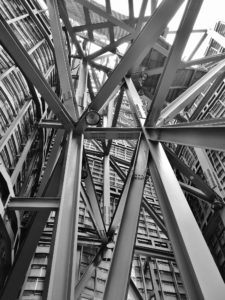
When considering the cost of a steel building, it’s essential to weigh it against the long-term benefits, such as durability, low maintenance, energy efficiency, and potential savings in insurance and operational costs. Investing in a high-quality steel building can provide a reliable and cost-effective solution for a wide range of applications.
COMPARE QUOTESAre Steel Buildings Safe: Comparing Steel Buildings to Traditional Construction
When it comes to safety, steel buildings offer several advantages compared to traditional construction methods. Here are some key points to consider:
- Structural Integrity: Steel buildings are known for their exceptional strength and durability. The use of high-quality steel components ensures superior structural integrity, making them resistant to various weather conditions, including high winds, heavy snow loads, and seismic activity. This robustness enhances the safety of the building and its occupants.
- Fire Resistance: Steel is a non-combustible material, meaning it does not fuel fires. Steel buildings are designed to withstand high temperatures and are less prone to fire damage compared to traditional construction materials like wood. Additionally, steel structures can be equipped with fire-resistant coatings and fire suppression systems to further enhance their fire safety.
- Resistance to Pests and Mold: Steel is impervious to pests such as termites, rodents, and insects, which can cause significant damage to traditional construction materials. Furthermore, steel does not promote the growth of mold or mildew, helping to maintain a healthier indoor environment.
- Improved Safety Features: Steel buildings can incorporate advanced safety features, such as fire-rated doors, emergency exit signs, sprinkler systems, and security measures, ensuring the well-being of occupants. Additionally, steel structures can be designed to meet specific safety standards and codes enforced by local authorities.
- Reduced Risk of Structural Failure: Steel buildings undergo rigorous engineering and quality control processes to ensure compliance with industry standards. The precision of fabrication and assembly minimizes the risk of structural failure, providing peace of mind for building owners and occupants.
It is important to note that while steel buildings offer inherent safety advantages, proper construction practices, adherence to building codes, and regular maintenance are crucial to ensure optimal safety. Working with experienced steel building suppliers and contractors who follow industry best practices is essential to achieve a safe and secure structure.
When comparing steel buildings to traditional construction, it’s clear that steel offers distinct safety benefits. However, it is essential to consult with professionals and conduct a comprehensive risk assessment to address specific safety concerns and tailor the building design to meet your unique requirements.
How to Prepare for Your Steel Building Delivery: Understanding the Cost of Prep
Preparing for the delivery of your steel building is an important step to ensure a smooth and successful construction process. Here are some key factors to consider when preparing for your steel building delivery:
- Site Preparation: Before the delivery of your steel building, you need to prepare the site where the structure will be installed. This includes clearing the area of any debris, leveling the ground, and ensuring proper drainage. Site preparation may also involve obtaining necessary permits and adhering to local building codes and regulations.
- Access and Delivery Route: Assess the accessibility of your site to determine the best delivery route for the steel building components. Consider factors such as the size of the delivery truck, any potential obstacles along the route, and the proximity of the delivery point to the installation site. Clear the path to ensure easy access for the delivery truck.
- Foundation Preparation: Depending on the design and size of your steel building, you may need to prepare a foundation. Consult with an engineer or a foundation specialist to determine the appropriate foundation type for your building, such as concrete slab, pier and beam, or concrete piers. Proper foundation preparation is crucial for the stability and longevity of your steel building.
- Equipment and Labor: Depending on the complexity of your steel building project, you may require equipment and labor to assist with the unloading and installation process. This can include forklifts, cranes, or other machinery to handle heavy components. Make sure you have access to the necessary equipment and skilled labor to facilitate the delivery and installation of your steel building.
- Insurance and Liability: Prior to the delivery of your steel building, review your insurance coverage to ensure you have adequate protection in case of any unforeseen incidents or damages during the delivery or installation process. Additionally, clarify the liability responsibilities between you, the building supplier, and the delivery team to avoid any misunderstandings or disputes.
- Communication with Suppliers: Maintain clear and open communication with your steel building supplier throughout the preparation process. Discuss delivery timelines, logistics, and any specific requirements or concerns. Having a good rapport with your supplier can help address any potential issues and ensure successful delivery.
It is important to factor in the cost of site preparation and any additional equipment or labor required when considering the overall budget for your steel building project. Consulting with professionals and experienced contractors can provide valuable guidance and help you estimate the cost of site preparation accurately.
By adequately preparing for your steel building delivery, you can minimize delays, ensure the safety of the installation process, and set the stage for a successful construction project.
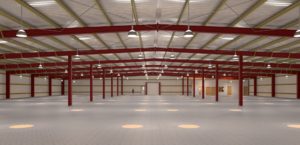
Top 10 Uses for Steel Buildings
Steel buildings are versatile structures that can be used for a wide range of purposes. Their durability, affordability, and customizable features make them a popular choice across various industries. Here are the top 10 uses for steel buildings:
COMPARE QUOTESWarehouses and Storage Facilities:
Steel buildings provide ample space for storing goods, inventory, and equipment. With clear-span designs and customizable layouts, they offer flexibility for organizing and managing storage needs.
Manufacturing Facilities:
Steel buildings are well-suited for manufacturing facilities, providing a large open space for production lines and equipment. Their strength and durability make them capable of withstanding heavy machinery and processes.
Agricultural Buildings:
Steel buildings are widely used in the agricultural industry for barns, livestock shelters, equipment storage, and indoor riding arenas. They offer a secure and protected environment for animals, crops, and farming equipment.
Retail and Commercial Spaces:
Steel buildings can be designed to serve as retail stores, showrooms, offices, and commercial spaces. Their customizable features allow for the incorporation of storefronts, office partitions, and other necessary amenities.
Garages and Auto Repair Shops:
Steel buildings are an excellent choice for garages and auto repair shops. They provide ample space for vehicle storage, maintenance, and repair equipment. Additionally, the durability of steel ensures a safe and secure environment for vehicles.
Sports and Recreation Facilities:
Steel buildings are ideal for sports complexes, indoor sports arenas, and recreational centers. Their wide span capabilities allow for large, open spaces to accommodate various sporting activities.
Aviation Hangars:
Steel buildings are commonly used for aviation hangars, providing a secure and spacious storage area for aircraft. The clear-span design allows for easy maneuverability of planes and offers protection from weather elements.
Educational Facilities:
Steel buildings are a cost-effective solution for educational facilities such as classrooms, training centers, and school gymnasiums. They can be customized to meet specific educational requirements and provide a comfortable learning environment.
Community and Event Centers:
Steel buildings can serve as community centers, event venues, or multipurpose halls. Their versatility allows for the hosting of various community events, gatherings, and social activities.
Religious Buildings:
Steel buildings are increasingly used for churches, temples, and other religious structures. They offer an affordable and flexible solution for accommodating large congregations and providing a spiritual space.
Steel buildings have proven to be a reliable and cost-effective choice for a wide range of applications. Their versatility, durability, and customization options make them an attractive option for various industries and organizations. Whether it’s for storage, manufacturing, retail, or recreation, steel buildings provide a practical and efficient solution for meeting diverse needs.
Factors Affecting the Cost of Steel Buildings
When considering the cost of a steel building, several factors come into play. Understanding these factors can help you make an informed decision and determine the overall investment required. Here are some key factors that can impact the cost of steel buildings:
- Steel Prices: The price of steel is a significant factor in the overall cost of a steel building. Steel prices can fluctuate based on market conditions, demand, and availability. It’s essential to stay updated on current steel prices when estimating the cost of your project.
- Building Size: The size of the steel building plays a crucial role in determining the cost. Larger buildings require more materials, engineering, and labor, which can increase the overall expense. The square footage of the structure will directly impact the cost.
- Customization and Design: The level of customization and design complexity can affect the cost of a steel building. Special features, architectural details, and unique finishes may add to the overall price. Consider your specific requirements and budget when deciding on the level of customization.
- Insulation and Energy Efficiency: Incorporating insulation, such as spray foam, can enhance the energy efficiency of a steel building. While it adds an upfront cost, it can lead to long-term energy savings. Insulation helps maintain a comfortable indoor environment and reduces heating and cooling costs.
- Delivery and Installation: The cost of delivering and installing the steel building is an important consideration. Some suppliers offer free delivery within a specified radius, while others may charge based on the distance from the manufacturing facility. It’s crucial to factor in these costs when budgeting for your project.
- Additional Features and Accessories: Various additional features and accessories, such as doors, windows, ventilation systems, and interior finishes, can impact the cost. Consider your specific needs and desired functionalities when choosing these components.
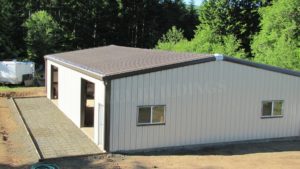
Popular Choices and Price Ranges for Metal Garages
Metal garages are a popular choice for vehicle storage and workshop spaces due to their durability and versatility. The cost of a metal garage can vary based on several factors, including size, customization, and additional features. Here is a general price range for metal garages:
- Small Metal Garages (Single Car): Small metal garages designed to accommodate a single car typically range from $3,000 to $6,000.
- Medium-Sized Metal Garages (Two to Three Cars): Medium-sized metal garages, suitable for two to three cars, generally fall within the range of $6,000 to $10,000.
- Large Metal Garages (Multiple Vehicles or Workshop Space): Large metal garages, capable of housing multiple vehicles or serving as a workshop space, can cost anywhere from $10,000 to $20,000 or more, depending on size and customization.
Keep in mind that these are approximate price ranges, and the final cost will depend on various factors specific to your project. It’s recommended to consult with reputable suppliers and obtain detailed quotes to get an accurate estimate for your metal garage.
Several factors, including steel prices, building size, customization, and additional features, influence the cost of steel buildings. Understanding these factors allows you to make informed decisions and plan your budget effectively. For metal garages, price ranges vary based on the size and intended use. Conduct thorough research, compare quotes, and work with reliable suppliers to ensure a cost-effective and high-quality steel building or metal garage for your specific needs.
COMPARE QUOTESTop 10 Metal Building Suppliers in 2023
- General Steel Buildings: General Steel Buildings is a leading metal building manufacturer known for providing high-quality structures at competitive prices. They offer a wide range of pre-engineered steel buildings suitable for various applications, including commercial buildings.
- SteelMaster Buildings: SteelMaster Buildings specializes in providing durable and versatile steel structures. With their innovative design and engineering, they offer cost-effective solutions for commercial buildings, agricultural buildings, and more.
- Heritage Building Systems: Heritage Building Systems is a reputable supplier of pre-engineered metal buildings. They offer customizable options and a range of building sizes to meet the specific needs of commercial projects.
- American Steel Buildings: American Steel Buildings is a trusted provider of steel structures for commercial and industrial applications. They offer a wide selection of building designs, ensuring flexibility and customization options.
- Rigid Global Buildings: Rigid Global Buildings is known for its advanced engineering and high-quality metal buildings. They provide custom solutions for commercial buildings, warehouses, and industrial facilities.
- Star Building Systems: Star Building Systems is a leading manufacturer of metal buildings, offering durable and energy-efficient solutions. They provide a wide range of building options, including commercial, industrial, and agricultural structures.
- Mueller, Inc.: Mueller, Inc. is a well-established supplier of steel buildings with a focus on providing quality and value. They offer a variety of building styles and sizes, including commercial buildings, warehouses, and workshops.
- Behlen Building Systems: Behlen Building Systems is recognized for its expertise in designing and manufacturing metal buildings. They offer custom solutions for commercial and industrial projects, emphasizing durability and cost-effectiveness.
- Whirlwind Steel Buildings: Whirlwind Steel Buildings is known for its high-quality, precision-engineered metal buildings. They offer a range of options for commercial buildings, including retail spaces, offices, and warehouses.
- Olympia Steel Buildings: Olympia Steel Buildings specializes in providing durable and customizable steel buildings. They offer cost-effective solutions for commercial projects, ensuring efficient construction and long-lasting structures.
When considering a metal building supplier, it’s essential to evaluate factors such as reputation, experience, product quality, customization options, and customer reviews. Requesting quotes and comparing offerings from multiple suppliers can help you find the best match for your specific needs and budget.
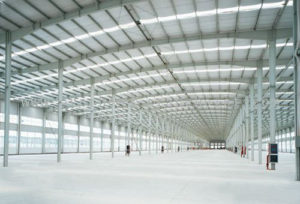
First Things to Consider When Building a Metal Structure
When planning to build a metal structure, whether it’s for residential or commercial purposes, there are several key factors to keep in mind. Understanding these considerations will help ensure a successful project that meets your needs and complies with local regulations. Here are the first things to consider:
Purpose and Design:
Determine the purpose of your metal structure. Are you looking for a metal garage, workshop, storage shed, or a residential home? Consider the size, layout, and design elements that will best suit your needs.
Budget:
Establish a realistic budget for your project. Metal structures generally offer a lower cost compared to traditional construction, but it’s essential to account for all expenses, including materials, labor, permits, and additional features.
Location:
Assess the location where you plan to install the metal structure. Consider factors such as local weather conditions, natural disasters that may occur in the area, and any specific building codes or regulations enforced by the local building department.
Building Codes and Permits:
Contact your local building department to understand the specific requirements and permits needed for constructing a metal structure. Ensure that your project complies with local building codes, setbacks, and zoning regulations.
Foundation and Site Preparation:
Determine the type of foundation suitable for your metal structure, whether it’s a concrete slab, pier and beam, or other options. Prepare the site by clearing the area, leveling the ground, and addressing any drainage concerns.
Structural Considerations:
Work with a reputable metal building supplier who can provide engineering drawings and design specifications. Ensure that the structure is engineered to withstand local wind and snow loads, as well as any other potential challenges specific to your location.
Customization Options:
Consider the customization options available for your metal structure, such as walk-in doors, windows, insulation, ventilation, and additional features. Determine which features are essential for your project and communicate them with your supplier.
Construction Timeline:
Understand the expected timeline for your metal structure project. Consider factors such as manufacturing lead time, delivery, site preparation, and construction. It’s essential to plan accordingly to minimize any potential delays.
By considering these factors at the beginning of your metal structure project, you can ensure a smooth process from start to finish. Working with experienced professionals and adhering to local regulations will help you create a durable, cost-effective, and customized metal structure that meets your needs and withstands natural disasters.
COMPARE QUOTES
Leave a Reply